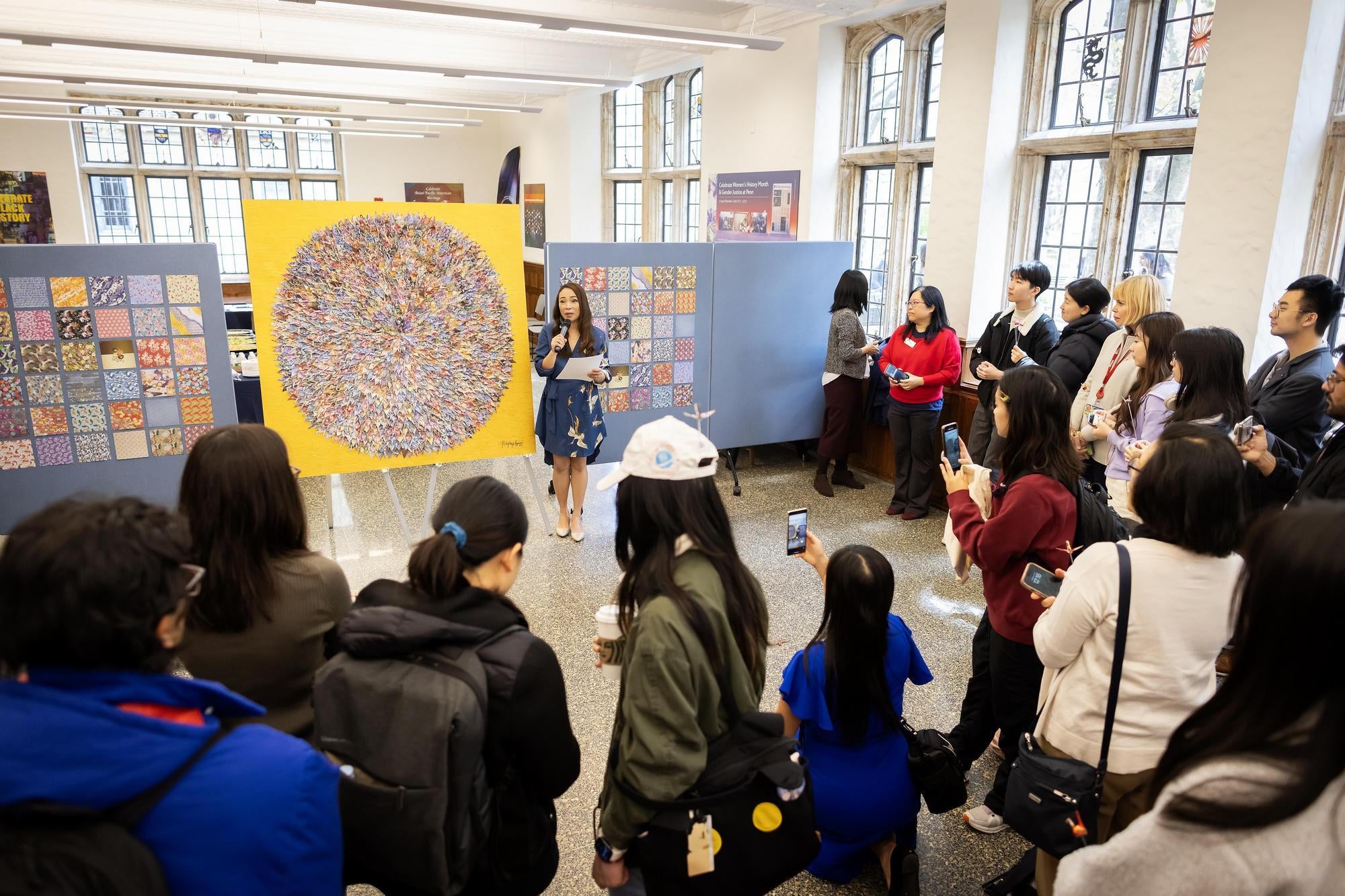This story was originally published on April 28th 2025 in Penn Today.
Writer: Tina Rodia
Photographer: Eric Sucar
Members of Penn’s Pan-Asian American Community House (PAACH) unveiled a new mural ahead of Asian/Pacific American Heritage Month in the ARCH building at an event on April 16.
tudents, faculty, and staff members gathered in the lobby at Penn’s ARCH building, passing around baskets of small origami cranes. The month of May is Asian / Pacific American Heritage Month, and the Pan-Asian American Community House (PAACH) team holds its annual mural unveiling in April as a preview event for APA heritage month. “We host the celebration before the month of May, before students leave campus,” said Mei Long, director of PAACH.
Established by Congress in 1992, APA heritage month was designated in May in recognition of two historical events: the arrival of the first Japanese immigrant to the U.S. in May 1843, and the completion of the transcontinental railroad in May 1869. Standing beside the concealed mural before its reveal, Long explained why the railroad was significant: It was largely built by approximately 20,000 Chinese laborers. At its completion, the railroad cut travel time from New York to San Francisco from several months to just seven days.
“The railroad united the country and made a strong foundation for the economic prosperity in the years that followed,” said Long. “But the Chinese laborers suffered prejudice, abuse, significantly lower wages, and social isolation. The laborers organized strikes for better conditions.” These strikes, Long explained, “paved the way for labor rights that benefit all of us today.”Tina
Long offered another history lesson. “PAACH is celebrating 25 years in 2025, after Penn students called for an Asian Pacific Islander cultural resource center in 2000.”
The PAACH team—Long and associate directors Vicky Faye Aquino and Daniel Hoddinott, and program coordinator Cindy Au-Kramer—asked the crowd to form a circle, count to three, and then unveiled a large canvas with a central mandala. Looking closer, 1,000 paper cranes comprise the mandala, all intricately folded with decorative origami paper.
The mural, “1,000 Paper Cranes Mandala,” is the handiwork of Aquino. “On my first day at PAACH, I noticed tiny paper cranes hung from a pillar and they provided a warm and colorful welcome to the space,” she said. In planning and designing this year’s mural, Aquino chose to create 1,000 origami cranes by hand, alone, over the course of three months.
“In Japanese culture, cranes symbolize longevity and fortune. It is believed if you fold 1,000 cranes and make a wish, your wish will come true,” explained Aquino. “The cranes symbolize hope, healing, and strength in challenging times.”
Aquino chose to mount the cranes in the shape of a mandala, which means “sacred circle” in Sanskrit. “It became a meditation for me; it takes patience, dedication, and focus. I gave birth eight months ago, and I got to share the experience with my newborn daughter. She was strapped to me while I folded cranes.”
“Despite the kind offers I accepted no help,” she added. “I was committed to doing it myself so I can have my wish granted. I’m grateful for the opportunity to bring the community together through art. Like a paper crane, we are shaped by each fold, delicate yet resilient, grounded in patience and possibility. So, give yourself a challenge, commit to it, and pour your heart into it a thousand times.”
Aquino then asked everyone to close their eyes, make a wish, and whisper it to the paper crane. After they opened their eyes, Aquino revealed her wish: “My wish is that all your wishes come true.”

